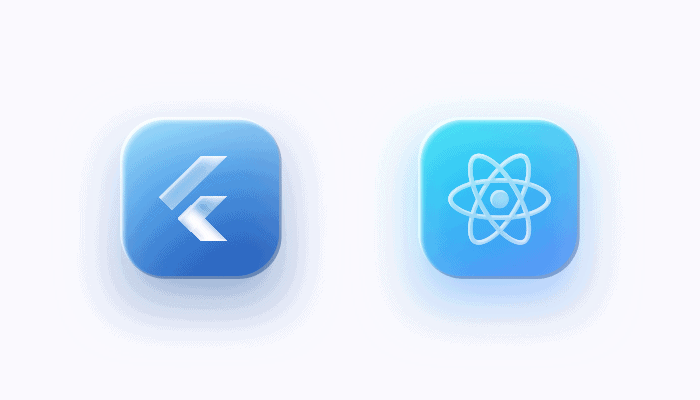
Today, if you are not targeting mobile app users, you are going to miss about 5 billion potential customers. For this reason, software developers try to always include mobile apps in their offers, with many of them even taking the mobile-first approach.
At the same time, native mobile app development can be rather costly. You need to create native code for at least the two major platforms – Android and iOS – to cover most of the market. With native development, you need to find developers proficient in as many as five programming languages: Java or Kotlin for Android and Objective C or Swift for iOS. Recruiting such a multi-language team raises the development cost significantly.
As opposed to native app development, the cross-platform approach is much more cost-efficient and has a number of other benefits, too:
- A single source code for both platforms, which simplifies the development and further maintenance
- Uniformity and consistency of the code across both platforms creating a similar look-and-feel for both apps
- Code reusability in the development of both platforms
- Shorter time-to-market due to quicker development
For these reasons, mobile app developers often choose the tools that allow such a cross-platform approach to deliver well-performing apps quicker and on a smaller budget. This market is now dominated by the two frameworks – Flutter and React Native – which are used in about 80% of cases of cross-platform development.
Flutter vs React Native at a glance
Before we dive deeper into the specifics of cross-platform app development with Flutter and React Native, let’s briefly look at their history and basic characteristics.
The two frameworks have many things in common: both were created with a focus on mobile development and evolved into tools supporting also web and desktop apps, both use a single programming language, both are open-source. However, there are differences, too.
Let’s look closer at the main features of React Native and Flutter and find where each technology performs best.
Getting started
In the context of installation and setup, React Native is more straightforward than Flutter. To install React Native, you need to first get NodeJS and Yarn, and then install the framework itself using the command line.
For Flutter, you need to download the binary for the mobile platform and then add it to the PATH variable. Flutter installation includes additional settings and is, therefore, more time-consuming.
Learning curve
The learning curve depends on the knowledge and experience of the language of the framework. Here, React Native definitely wins, as it requires knowledge of JavaScript which has been the most popular language for years in a row. In 2021, almost 65% of developers use JavaScript, while Dart is a language of choice only for 6% of them.
However, if we compare documentation, the situation is reversed – Flutter’s official documentation is clear and detailed; it starts with the basic things. On the contrary, the documentation of React Native is aimed at more experienced developers and assumes that they know how to set up the environment.
Performance
Both frameworks perform great for most of the purposes, however, there are nuances. While JavaScript generally performs better than Dart on average, in mobile apps, React Native appears to be slightly slower in contrast to Flutter performance.
The reason is the so-called “bridge” between the JavaScript code and the mobile native environment that is used in React Native development. The bridge interprets the JavaScript code into the language of the particular device, for which it requires extra time and processing power. In turn, Flutter does not need any additional layer to render the UI due to its ability to compile the code to x86 and ARM directly. Thus, cross-platform mobile apps created with Flutter perform better and produce a lower load on the mobile device.
UI development
In UI development, React Native is very dependent on lots of third-party libraries, as its core functionality only includes UI rendering and APIs for device access. The Flutter framework, on the other hand, comes with various components that include a UI rendering engine, testing, navigation, stateful management, Flutter widgets, as well as many libraries.
Both frameworks have the Hot Reload feature allowing the developer to review the changes they have made quickly without recompiling their code. Hot Reload speeds up the development process greatly.
CI/CD support
With Flutter, you can deploy your mobile applications to the App Store and Google Play using the built-in CI/CD function, although it can be somewhat complicated for the App Store. The process is well-documented and allows deployment via the command line, which makes it rather simple and straightforward.
For apps built with React Native, only manual deployment is available, as no integrated CI/CD support exists. However, you can use a third-party CI/CD tool to deploy your apps.
Developer community
Both cross-platform frameworks are open-source and rely on an active and enthusiastic community of developers to contribute to the code. React Native has a much larger number of code contributors than Flutter – 2257 against 936. Both React Native and Flutter have many other channels of communication – Facebook and Google groups, accounts on Reddit, StackOverflow, LinkedIn, and Twitter.
In absolute figures, the React Native community is larger, however, Flutter is quickly gaining. Another factor is the different popularity of the programming languages used in both platforms – JavaScript is much wider spread than Dart.
What to choose for your project – React Native or Flutter?
In cross-platform development, both frameworks have proved their efficiency and performance. However, their differences define the kind of applications for which React Native or Flutter is the best choice.
So, we recommend that you consider React Native in the following cases:
- Large, sophisticated mobile apps
- Code reuse between mobile and web app development
- You have a team of developers fluent in JavaScript
Opt for building a Flutter app in the following cases:
- Your app is an MVP and the speed of development is critical
- You are planning not only a mobile app but also apps for desktop and wearable devices. Flutter can build apps not just for mobile platforms, but also for the web and desktop browsers that run on Windows, Linux, and macOSas
- Your app is UI-focused.
How QuickBlox can Help
No matter which popular framework you choose, you can turn to QuickBlox for a simple method of integrating communication functionality in your cross-platform applications.
QuickBlox offers SDKs for React Native and Flutter that you can use to implement live chat and video calling in your app.
Chat applications created with the QuickBlox SDKs come with complete communication functionality that is implemented quickly and easily without taking too much time and resources from your core app development. Just use the code provided in the SDK to add the communication feature – and soon you will be able to send your first message!
Contact us to find out more!






